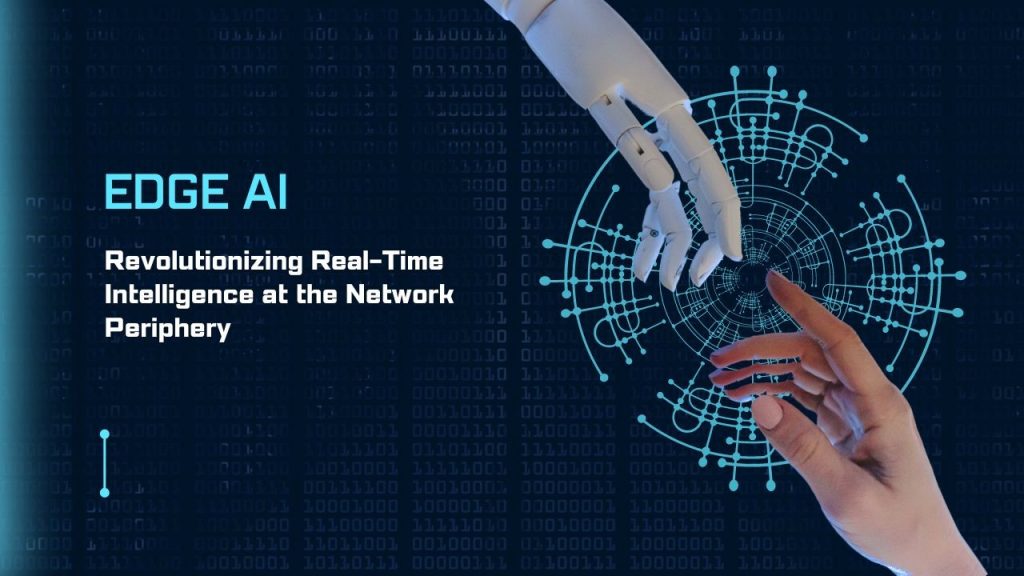Imagine your smartphone or car making complex decisions in milliseconds, without waiting for instructions from distant data centers. Welcome to the world of Edge AI, where artificial intelligence is being redefined to operate at the edge of networks, changing how data is processed and decisions are made. Devesh Mohan Pandey explores this evolution, highlighting how Edge AI empowers devices like smartphones and IoT sensors to handle data locally, overcoming traditional latency, bandwidth, and privacy challenges and driving significant advancements across various industries.
The Emergence of Edge AI
As the world becomes more connected with billions of devices generating data every second, the traditional approach of sending all data to the cloud for processing has become inefficient. This is where Edge AI steps in, revolutionizing how information is managed at the network’s edge. Edge AI represents a significant shift from centralized cloud processing to distributed computation at the network’s edge. This approach enables AI algorithms to run directly on devices like smartphones, IoT sensors, and autonomous vehicles, effectively addressing centralized systems’ latency, bandwidth, and privacy challenges. Driven by the expansion of IoT devices and the increasing demand for real-time processing, Edge AI is transforming how data is handled and processed, offering enhanced performance and responsiveness.
Edge AI’s Core Components
Edge AI depends on three main components: Edge Devices, such as embedded systems in cars and IoT sensors, which perform up to 10 trillion operations per second with low power usage; Edge Gateways, which act as intermediaries by managing and processing data from multiple edge devices at speeds up to 10 Gbps; and Cloud Servers, which, although less central due to Edge AI’s capabilities remain important for training complex models and storing historical data.
Advantages of Edge AI: Transforming Real-Time Processing
Edge AI delivers transformative advantages through real-time processing by analyzing data locally, significantly cutting reaction times—such as reducing decision-making latency significantly in autonomous vehicles and decreasing crash scenarios notably. It minimizes latency by processing data closer to its source, which is vital for applications like financial trading and augmented reality. Enhanced security and privacy are achieved as sensitive data is handled locally, mitigating breach risks and ensuring compliance with data protection regulations. Additionally, Edge AI boosts bandwidth efficiency by transmitting only essential insights instead of raw data, thus lowering operational costs and energy consumption.
Innovations in Edge AI Implementation
Despite its benefits, Edge AI faces challenges such as hardware limitations and model optimization. Specialized AI chips have significantly improved performance, with some edge devices operating up to 10 times more efficiently than general-purpose CPUs. Model optimization techniques like quantization, pruning, and knowledge distillation allow AI models to become leaner and faster. Think of these techniques as compressing a large image file without losing too much quality. This enables powerful AI models to run efficiently on smaller, resource-constrained devices. Scalability and management are also enhanced through federated learning and over-the-air updates, which facilitate consistent and private model updates across distributed edge devices without centralizing data.
Transformative Applications Across Industries
Edge AI is revolutionizing various sectors by delivering transformative impacts. In Autonomous vehicles, it processes sensor data in real-time, cutting decision-making latency remarkably and improving object recognition accuracy. For smart cities, Edge AI enhances infrastructure, optimizing traffic flow and reducing travel times by 15% while cutting traffic-related emissions crucially. In healthcare, AI-enabled wearables provide real-time health monitoring with accuracy on par with expert cardiologists, advancing early detection and continuous health monitoring. Meanwhile, in industrial IoT, Edge AI drives predictive maintenance, decreasing unplanned downtime by 35%, which leads to substantial cost savings and enhanced operational efficiency.
Future Trends: Paving the Way for Advanced AI Capabilities
The future of Edge AI is being shaped by several emerging trends. Integration with 5G networks will boost Edge AI capabilities, allowing for the deployment of more advanced models with enhanced real-time responsiveness. The fusion of AI and IoT (AIoT) will drive more autonomous and intelligent systems across various industries, improving supply chain management, energy utilization, and healthcare. Neuromorphic computing, inspired by the human brain, promises to significantly enhance Edge AI efficiency, potentially reducing latency for complex visual processing tasks by up to 70%. Additionally, space-based Edge AI is becoming crucial for autonomous decision-making in spacecraft and rovers, minimizing dependence on Earth-based control. However, the future of Edge AI also faces potential challenges, such as ensuring robust cybersecurity for millions of distributed devices and managing the ethical concerns surrounding autonomous decision-making in critical sectors like healthcare and law enforcement.
In summary, Devesh Mohan Pandey analyzes Edge AI as a game-changer in real-time intelligence, shifting from centralized cloud processing to distributed computation on devices like smartphones and IoT sensors. Addressing latency, bandwidth, and privacy concerns, its components—Edge Devices, Gateways, and Cloud Servers—enhance efficiency and security. While hardware and model optimization challenges persist, innovations like specialized AI chips and federated learning are advancing the field. Future trends, including 5G integration, AIoT fusion, and neuromorphic computing, promise to revolutionize technology and industry applications further. As Edge AI continues to evolve, it’s not just industries that will benefit. From our smartphones to our cities, we’re entering an era where intelligent, real-time processing will make our world faster, smarter, and more efficient. The revolution has begun, and the possibilities are boundless.

